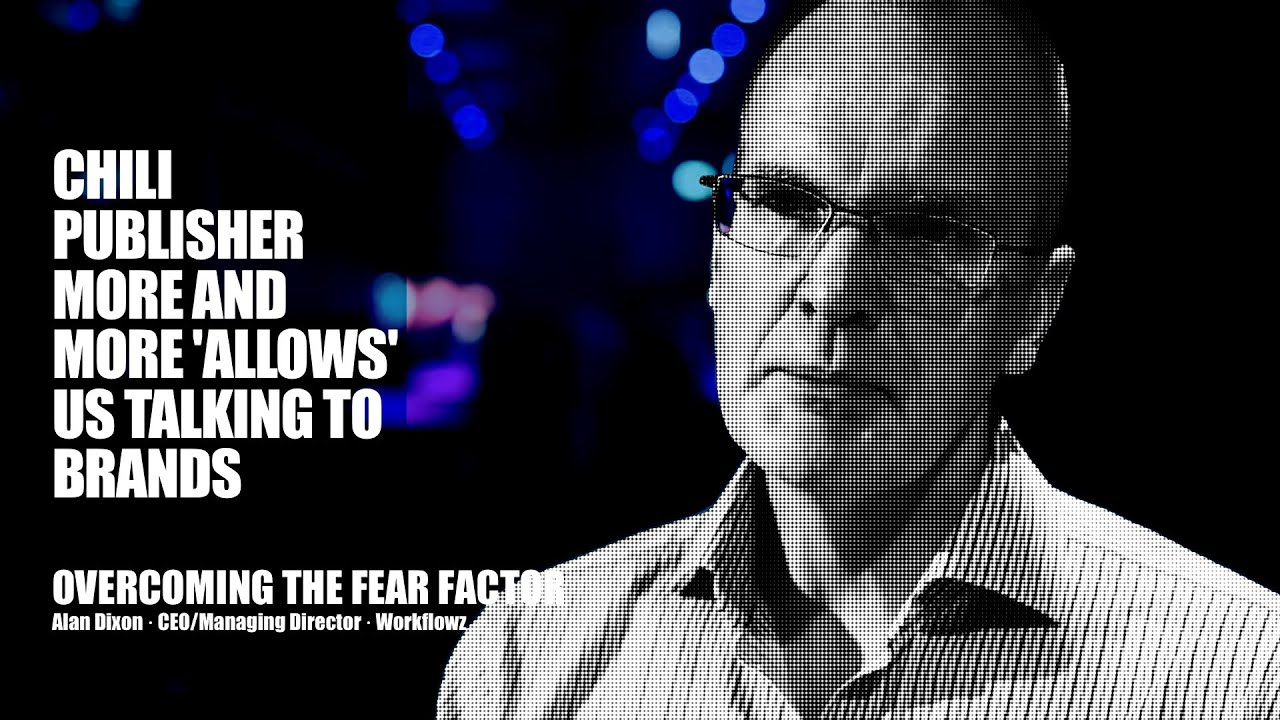Overcoming the ‘Fear Factor’ · Alan Dixon CEO/Managing Director · Workflowz
At the recent SPICYtalks in Berlin, we spoke with Alan Dixon, who is the CEO & Managing Director of UK and Australian based Workflowz. Seeing the amazing thing CHILI Publisher is capable of doing, the ever-recurring question must be – why aren’t more people investing in the software? CHILI Publisher is a success, but as we also spoke to CEO Kevin Goeminne about, CHILI publish has only a fraction of the market currently. Depending on partners who understand the software, who is capable of introducing it to the right customers, must be a challenge. In this interview, Alan Dixon also touches upon the fact that it’s also a question about overcoming a ‘fear factor’ when investing in technology like CHILI Publisher.
Enjoy the interview 🙂
We’ve been with CHILI since day one. As Kevin alluded at the beginning of his presentation, the company’s nearly 10 years old. We were there before it was actually called CHILI. We’ve helped grow their user base globally. We’re responsible for CHILI in the UK and we have satellite operations in Australia as well. And, it’s really effective to see that so many of the UK contingents are over here. Actually, it’s probably the biggest number that we’ve ever seen it from the SPICYtalks and is the fifth one that we’ve been attending.
So Workflowz, it’s kind of anonymous in a way. It doesn’t specifically say-
Exactly. Yeah. No, it’s very much talking about end-to-end production. Typically coming from the more traditional print side of things, that could be file creation, obviously where CHILI fits in. Web to print platforms all the way through the Enfocus platforms as well for file management and tracking and in position and efficiencies gained throughout the whole production touchpoints.
More recently, this has allowed us to talk to brands in a more effective way to deliver solutions that are compliant with their brand restrictions. And I think that’s the thing nowadays. There’s some guardianship which makes sure you are controlling things. Whereas you give people free reign to design their own style. We’re going to come up with something that is ad hoc and indifferent.
I think there’s a fear factor that people don’t understand what’s involved and our role is not just to represent a technology but it’s also to do the evangelical bit, standing there shouting about what’s good, but actually proving for real what can work. We are very much used to technology in practice and demonstrating the timeliness, you can get to market when somebody says we want to make a change to a template or do you have different localized variation? We can show that really spontaneously for customers. And I think, because we practice what we preach, we are actually better equipped and better empowered to actually allow our customers to see for real what’s involved. They do fear the unknown and I think it’s too often they’ve maybe made an investment previously and it hasn’t been successful for them and we work in partnership with our clients to make sure that they get a good return on investment.
Yeah, I think some people have looked at automation and seen the initial cost of bringing in a solution and that’s been a barrier to sale, whereas kind of standard day to day running costs, they can cope with. There’s no kind of a capex that’s required. Some of our organizations and clients that we’ve worked with obviously have outsourcing where the costs are far less than having a local workforce doing it, but that’s just moving the problem. It actually takes a lot of managing to control that remote team and that’s all, again, is all hidden within the running of that business. What we try and do is say, actually, it can be a best of both worlds. We can still work with remote teams and we do have lots of clients who have the offshore teams to do template work, but the real wins are back onshore with those brands and our clients working on behalf of those clients as well.
I don’t think it’s necessarily the price of the software. However, if you take Enfocus, it relies on other third party tools, some of that you’d already have investments with, other parts of it you might need to make additional investments with. I think the real challenge for any kind of technology rollout is the actual time to set up a team.
And first of all, evaluate the solutions even before a purchase has been made. That takes time. Make sure you make the right decisions because you don’t get a second bite, going back and saying “I made a missed investment” or, “Can we manipulate this to do something else?”. So, do the research upfront. Work with partners who are going to be honest and proactive in telling you the warts and all the good stuff, but a good level experience rather than being too biased. And that’s our role in this as well.
We are not the vendor, we don’t make these solutions. We take them to market. And I think that kind of impartial, independent advice really helps. Then when you’ve made that decision, keep that partnership going on because you already are working with a partner that understands your business, they can help you. So you become an extension to their team and that bi-directional way of working, flowing information, just sense checking sometimes, really, really works. And it’s not always something that you can charge for. It’s kind of the added value, which is always a challenge to make sure you do that. That’s how our customers come to trust us and work with us, and the loyalty comes from there. So people come back and then say, “Okay, is there something else we should be looking at?”, and actually reaching out to us, which is great from a marketing point of view because that’s spend zero costs and returning, all that hard work that we’ve put in over the years, comes back to us.


































































